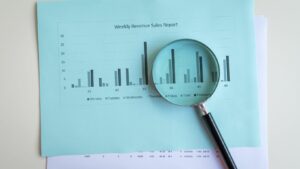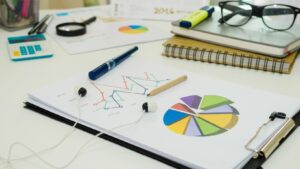In today’s data-driven world, understanding data analysis reports has become a crucial skill. Whether you’re a business executive, a marketing professional, or a curious individual, these reports can offer valuable insights that drive decision-making and strategy formulation.
Data analysis reports, however, can seem daunting at first glance. They’re often packed with complex charts, graphs, and numbers that might appear overwhelming. But fear not! Once you grasp the basics, you’ll find they’re not as intimidating as they seem. This article aims to demystify data analysis reports, giving you the confidence to interpret them and harness their power.
So, let’s dive into the world of data analysis reports and uncover the story your data has to tell.
Data Analysis Report
 Accurate comprehension of a data analysis report involves breaking it down into its principal components. This process aids the reader in concentrating on the crucial elements of the report.
Accurate comprehension of a data analysis report involves breaking it down into its principal components. This process aids the reader in concentrating on the crucial elements of the report.
Data collection takes first place in any data analysis report structure. It signifies the accumulation of raw data from various sources including surveys, social media, customer interactions, and transactions, among other examples. High-quality data collection ensures that the report provides reliable and relevant insights, confirming the expression that data is as good as its source. To collect useful data, one typically defines a clear purpose for the data collection activity and identifies sources that provide the requisite data.
Data Processing and Cleaning Techniques
Data processing and cleaning follow collection in the sequence of report creation. The raw data collected from multiple sources, at both macro and micro levels, often contains many errors and inconsistencies. Data processing techniques, such as data integration, transformation, and reduction, come into play to convert this raw data into a suitable format for analysis. Data cleaning, on the other hand, aims at eliminating inaccuracies in the data, such as incorrect entries and redundancies.
Essential Tools and Software for Data Analysis
 Having highlighted the components of data analysis, it’s now imperative to delve into the tools that aid in this process. These tools are pivotal in determining the validity and efficacy of the analysis and ultimately in enhancing the quality of the insights derived.
Having highlighted the components of data analysis, it’s now imperative to delve into the tools that aid in this process. These tools are pivotal in determining the validity and efficacy of the analysis and ultimately in enhancing the quality of the insights derived.
Statistical software constitutes a core component in the data analysis pipeline, providing sophisticated algorithms for processing vast datasets, recognizing patterns, making predictions, and verifying hypotheses..
The choice of software primarily hinges on the nature of the task, user’s familiarity with the tool, and the dataset’s structure.
Data visualization tools play an equally significant role. They convert analyzed data into visual elements, granting easier and faster interpretation of complex data trends. Some of the widely utilized tools facilitate the formation of charts, graphs, and other visual elements designed to enhance the comprehension of complex data analysis reports.
These tools share a common goal of making data more approachable and comprehensible, helping stakeholders and decision-makers to derive insights swiftly and accurately.
Key Sections in a Data Analysis Report
 Navigating a data analysis report involves understanding its main pillars, the executive summary, and the methodology and results section. These sections provide a snapshot of the report, detail how data was collected and analyzed, and demonstrate the found results.
Navigating a data analysis report involves understanding its main pillars, the executive summary, and the methodology and results section. These sections provide a snapshot of the report, detail how data was collected and analyzed, and demonstrate the found results.
The executive summary serves as the report’s compass. Within this section, the reader finds the report’s purpose, its key findings, and its significance. These elements aim to give a comprehensive overview of the report in a few short paragraphs. For instance, a data analysis report on customer buying patterns might mention the report’s aim to understand consumer behavior, summarize key insights like peak buying times, and conclude with the potential value of knowing these patterns, such as improved inventory management.
Methodology and Results
In the methodology and results segment of the report, analysts detail their strategy in gathering and processing data. They discuss the chosen data sources, analytical methods used, and specific software employed for analysis, like Python and SPSS. These specifics not only offer a credibility factor but also enable other researchers to replicate the study if necessary.

